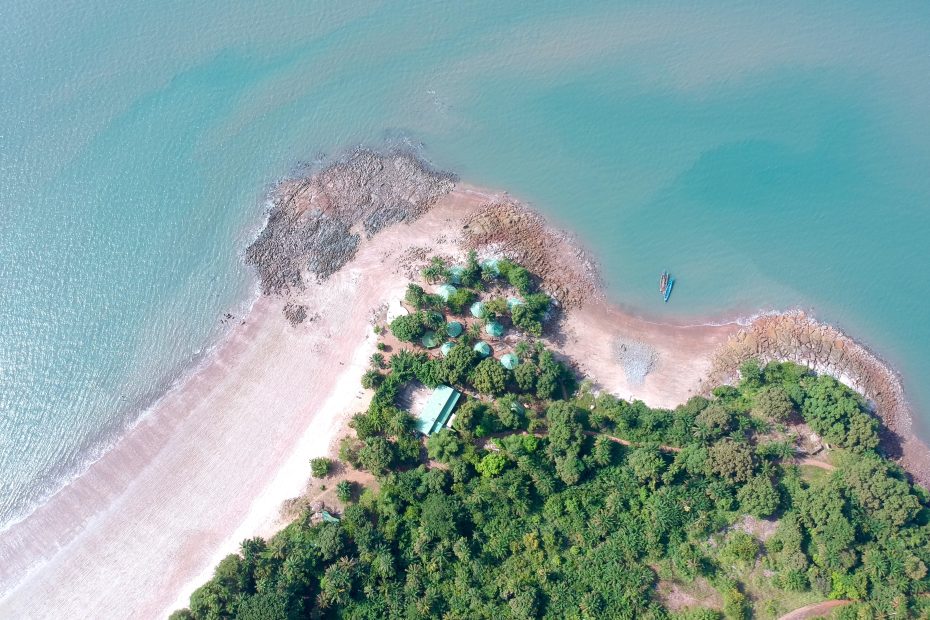Table of Contents
Introduction
Equatorial Guinea is a small country located on the west coast of Central Africa, bordered by Cameroon and Gabon. Despite its small size and population, Equatorial Guinea possesses immense biodiversity and a vibrant culture influenced by Spanish colonization. While it has largely stayed off the typical tourist’s radar, this relatively unknown country has many hidden gems waiting to be explored by intrepid travelers looking to get off the beaten path.
Geography
Equatorial Guinea consists of two regions: the mainland area known as Rio Muni and the five volcanic islands that make up the insular region. Rio Muni is mostly covered by lush rainforests and borders the Atlantic Ocean, while the islands feature pristine white sand beaches surrounded by crystal clear ocean waters. The tropical climate brings very consistent high temperatures throughout the year, with the rainy season lasting from March to June.
Though Equatorial Guinea is a small country, covering just over 10,000 square miles, the contrasting landscapes between the forests of Rio Muni and the islands offer diverse natural beauty. The capital Malabo sits on the northern island of Bioko, originally a volcano that left two massive craters that are now lush with vegetation. While the mainland and islands have untapped adventure for eco-tourists, about four-fifths of the population actually lives on Bioko.
History
The early history of Equatorial Guinea involved the migration of Bantu tribes from other parts of Africa. The Fang tribe became the most dominant, populating Rio Muni. In 1472, the islands were discovered by the Portuguese explorer Fernão do Pó, who named them Formosa Flora and Fernão do Pó. For the next few hundred years, the Portuguese controlled trade in the region, using the islands as plantations for sugarcane.
In the late 1700s and early 1800s, control of the islands passed to Spain as part of a treaty. The Spanish then claimed Rio Muni in the early 1900s, and named the combined area Spanish Guinea. The country finally gained independence in 1968, becoming Equatorial Guinea. Since the discovery of oil reserves in 1996, the country has seen huge economic growth, though the wealth remains concentrated among the political elite. Despite economic development and oil exports, Equatorial Guinea still retains much of its culture and biodiversity.
Culture
Several different ethnic groups and languages contribute to the unique culture of Equatorial Guinea. About 80% of the population are of Bantu origin, mainly the Fang tribe, while there are also tribes of Pygmy people such as the Bubi. Spanish and French are the official languages and the education system teaches Spanish, but local languages like Fang are commonly spoken, especially in rural areas. The melding of indigenous tradition with Spanish influence is evident in Equatoguinean customs, food, and the arts.
The cuisine relies on the bounty of fresh ingredients like seafood, tropical fruits, vegetables, coconut, and spices. Dishes like chicken cooked in peanut sauce over rice and fish stews with plantains showcase the local flavors. Music and dance are important creative outlets, such as the bikutsi style of guitar playing and the energetic balélé folk dance.
Tourist Attractions
For travelers yearning to explore offbeat places, Equatorial Guinea provides plenty of untouched destinations. Eco-tourists can trek through rainforests seeing wildlife up close, then relax on an empty beach on a tropical island. Urban areas provide glimpses into colonial architecture and local markets. Cultural festivals display Equatoguinean traditions of music, dance, and food.
Nature
The country’s protected areas allow visitors to experience exotic plant and animal life. Monte Alen National Park covers forested mountains on the mainland where gorillas, forest elephants, chimpanzees, and leopards dwell. Rio Campo Reserve on the coast has endangered sea turtles nesting on the beaches. On Bioko island, the giant snails at the Mitimele Reserve make for a unique encounter. Equatorial Guinea also claims remote islets surrounded by untouched ocean, perfect tropical getaways for swimming, snorkeling, and relaxing on stunning empty beaches.
Urban Areas
Though nature is the main highlight, Equatorial Guinea’s cities have their charms as well. Malabo, the capital located on Bioko island, features colonial era architecture built when Spain ruled the country. Visitors can see the neo-Gothic cathedral, Independence Square’s national monuments, and the old presidential palace. Bata is the largest city on the mainland and is more industrial but boasts lively markets, nightlife, and a developing cultural scene. The resort town of Mongomo was built to host presidents and VIPs, so it provides unexpected luxurious accommodations within lush rainforest.
Festivals
Attending the festivals allows for an immersive experience in Equatoguinean culture. The Fang New Year, called Eton, takes place in the small village of Niefang. It includes food, dancing, ancestor worship, and celebrations of fertility and purity. The three-day Ngoni Harvest Festival each December highlights Fang traditions and features music performances, food tastings, and parades.
Conclusion
Though one of Africa’s smallest countries, Equatorial Guinea encompasses rainforests, beaches, cities, and culture that create an enticing tropical location perfect for intrepid travelers seeking undiscovered places. Escaping the crowds to explore secluded rainforests, stay in remote island eco-lodges, and experience the unique local culture unveils the many hidden gems of Equatorial Guinea.
FAQs:
- What is the weather like?
Equatorial Guinea has a tropical climate year-round, with average temperatures around 80°F. There are two rainy seasons – February to May and September to December.
- What languages are spoken?
Spanish and French are the official languages. Fang, Bubi, and other local languages are also spoken, especially in rural communities.
- Is it safe for tourists?
Equatorial Guinea is relatively safe, especially in the major cities. However, travelers should always be cautious, avoid isolated areas, and steer clear of political protests.
- What is the currency?
The currency is the Central African CFA franc. US dollars and credit cards are also widely accepted in cities.
- What vaccinations are required?
Recommended vaccinations for Equatorial Guinea include hepatitis A, typhoid, yellow fever, and malaria pills.
